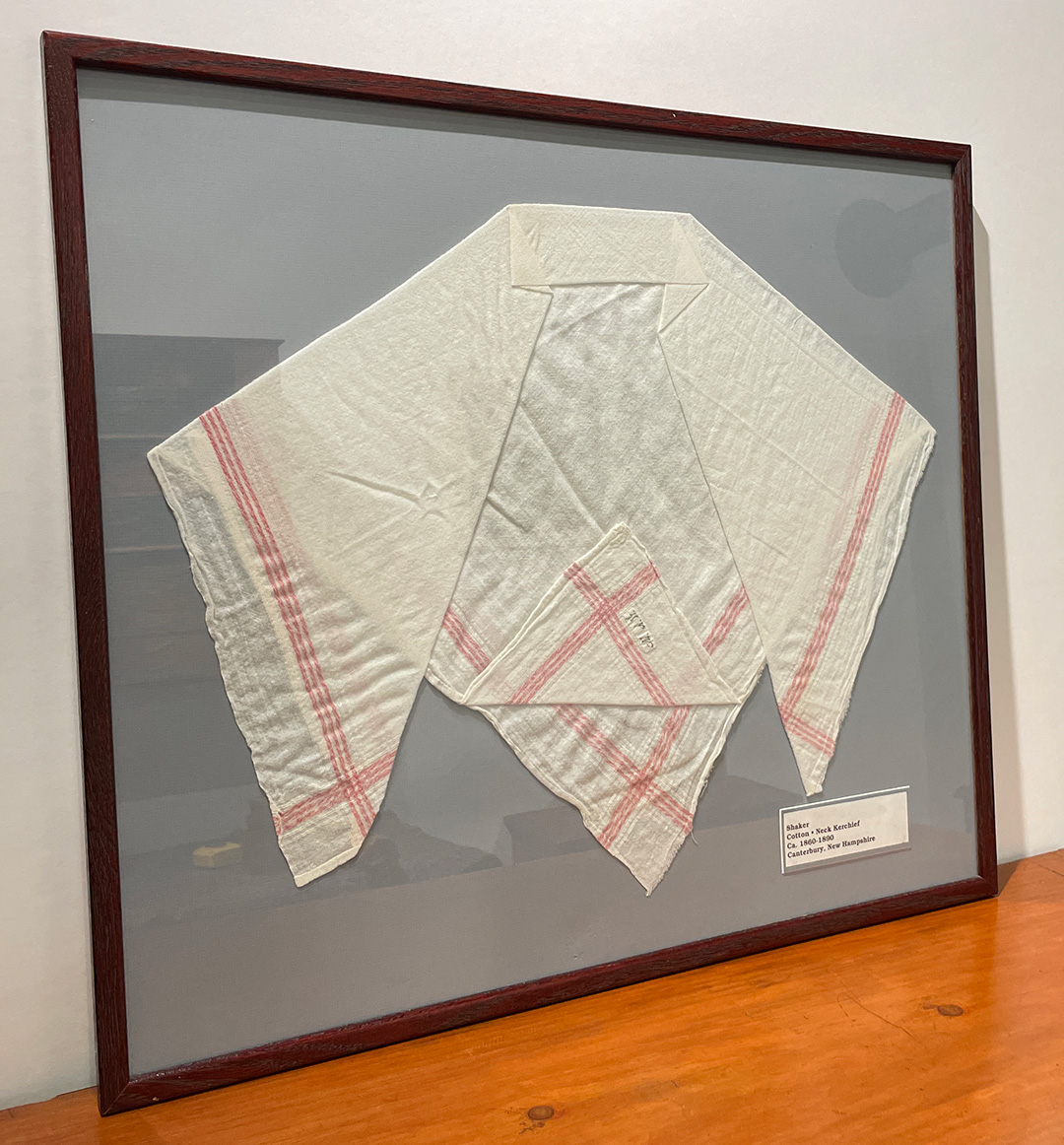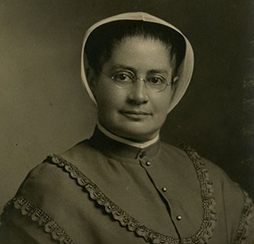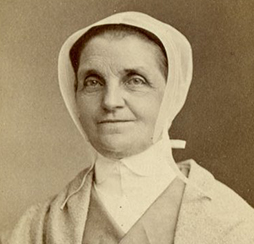Shaker Neckerchief attributed to Eldress Mary Whitcher
Canterbury, NH | 1860-1890
Cotton
framed: 24” h. x 27” w.
When Marianne Finch toured New England in the 1850’s, she took note of the Shakers’ distinctive style of dress, referring to the neckerchiefs worn by the Sisters as “certainly the most ingenious device ever contrived for concealing all personal advantage.”1
Established in the early nineteenth century, Shaker garments were designed to be practical and uniform—a shared style of dress was a means of cultivating a sense of unity in the Society. Sisters were clothed in dresses with full skirts. Over the bodice of the dress, Sisters added a collar and large neckerchief, or scarf, pinned with a straight pin at the breastbone so the triangular points fell just below the waist. All Believers were outfitted with multiple sets of clothing for different seasons and occasions, and this simple woven cotton Neckerchief would have been for everyday wear—one of eight “white cotton or muslin neck handkerchiefs” issued to each Sister.2 The tradition of wearing a neckerchief over a dress, which seemed dowdy and outdated compared to the elaborate necklines and crinolines of the nineteenth century, was worn by rural women in the British Isles in the seventeenth and eighteenth centuries before the style was adopted by the American Shakers.
This Neckerchief bears a tag with the handwritten initials: MAW, which has been attributed to Eldress Mary Whitcher (1815-1980) of Canterbury, New Hampshire. Noted author of Mary Whitcher’s Shaker House-keeper (1882), Mary was a near-lifelong Shaker, joining the Society in 1826 with three of her sisters. Her grandfather, Benjamin Whitcher, had been at the gathering of the Canterbury community, donating the land that became the site of the Church Family. In addition to serving as a Trustee, school teacher, kitchen sister, and celebrated cookbook author, Eldress Mary was the author of numerous poems published in The Shaker Manifesto.
Upon further research, we could find no evidence that Mary Whitcher had the middle initial “A,” (or, in fact, any middle initial whatsoever), and it is possible that this neckerchief is inscribed with the initials of Eldress Mary Ann Wilson (1863-1944), who joined the Canterbury Shaker community in 1875. Around this time, the use of neckerchiefs began to be phased out in favor of the half-cape, or “bertha.” According to Beverly Gordon, the reason Shaker Sisters transitioned to the bertha stemmed from a desire to be more fashionable—”the outmoded triangular neckerchiefs had been worn for a full hundred years.” Even so, neckerchiefs were not completely replaced overnight, and documentation of the continuation of the style exists in photography from the first decades of the twentieth century.3
1: Marianne Finch, An Englishwoman’s Experience in America (1853), quoted in Beverly Gordon, Shaker Textile Arts (1980), p. 150.
2: “Proper of Sisters’ Wearing Apparel,” Hancock, MA, 1840, quoted in Gordon, p. 153.
3: Gordon, p. 170-133
To inquire about this piece,
please contact us by phone.
914-763-8144
Or, you can reach us by email: jkr@jkrantiques.com



